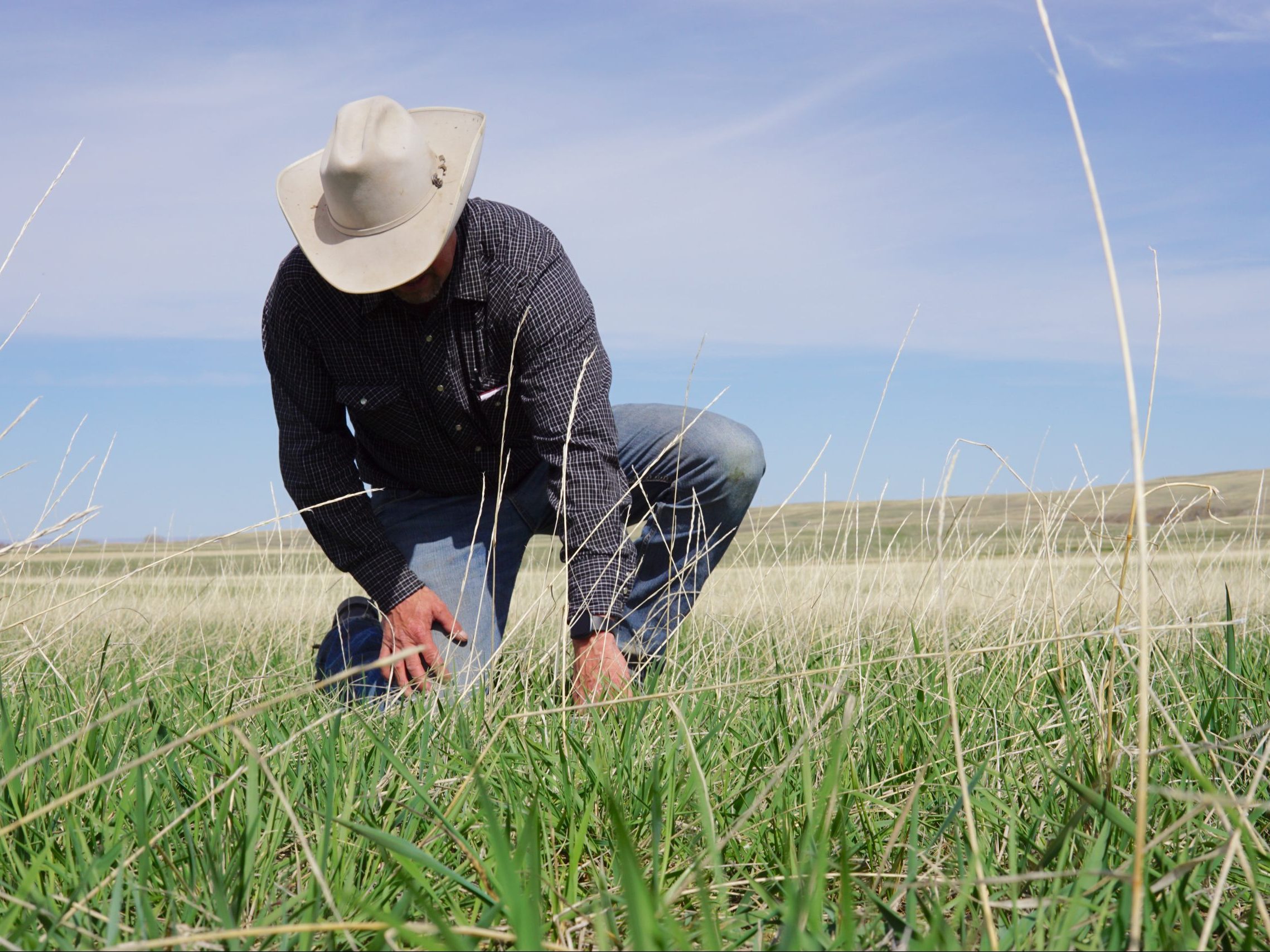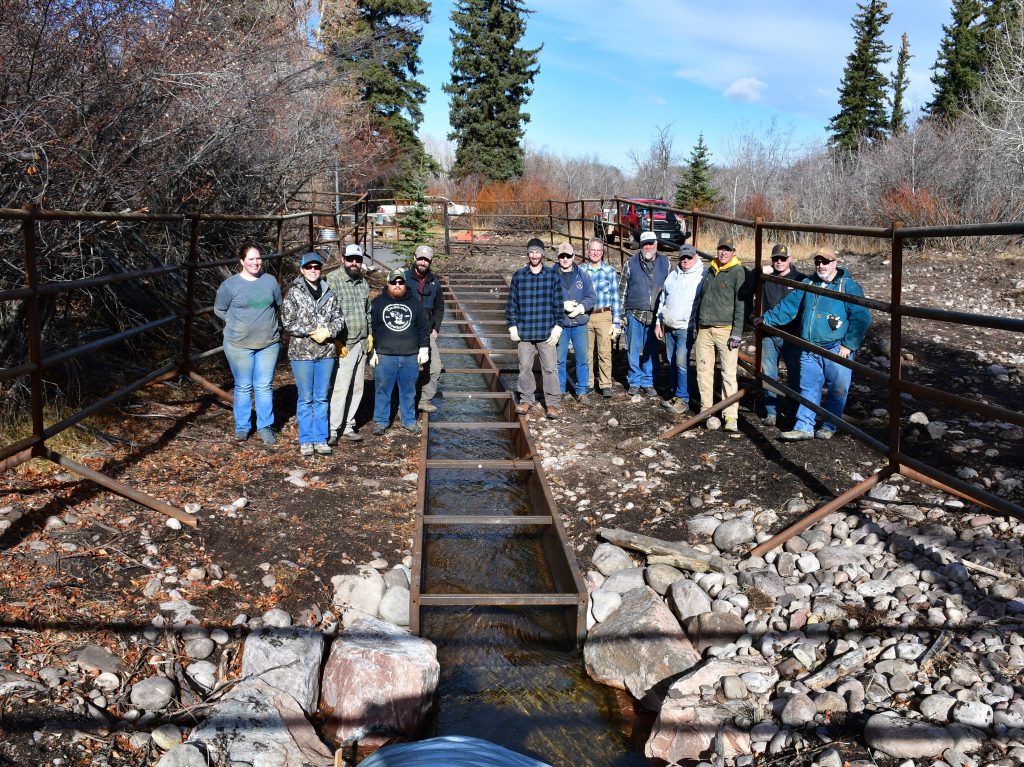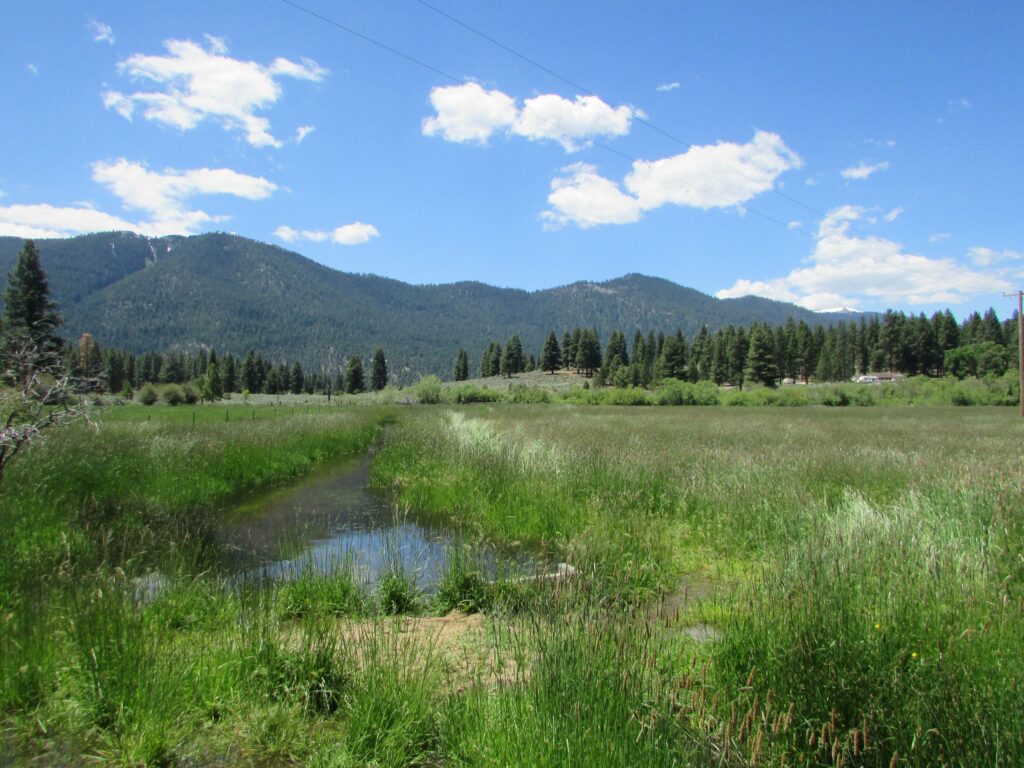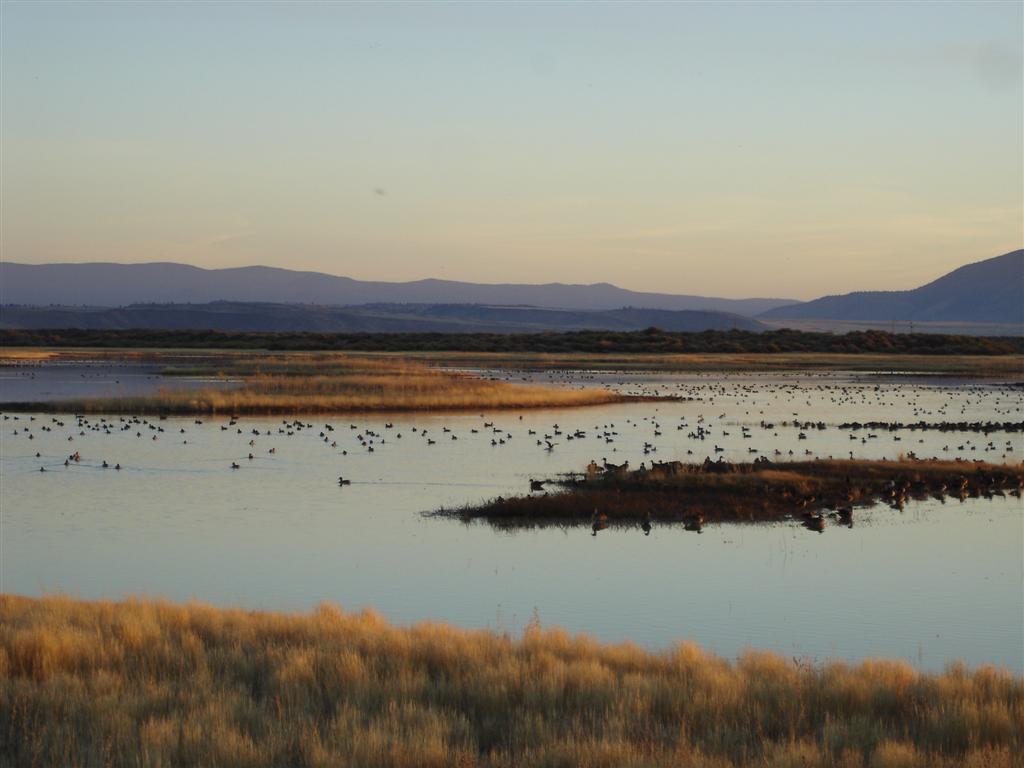“This is doing it.”
“This is an opportunity for us to be working together and talking about both sides of the issues, and coming to consensus and getting something done. This is doing it. I love it.“
Rich Roth, IX Ranch
On a bright May afternoon, Rich Roth lifts his gaze from the gleaming water at the bottom of a new stockwater tank to make out a herd of pronghorn silhouetted at the crest of a spring-green hill in the distance. Roth had just finished listing the benefits of the recently installed tank system to the 300 or so cattle he runs on the E Hanging T division of the IX Ranch in Blaine County, Montana, when he noticed the herd.
“Wildlife absolutely benefits from these as well, especially when they can’t find water elsewhere,” he said. “Water sources are what keep wildlife, so having good ones is important.”
After a few years of hard drought, as the last several have been, good water sources are fresh on Roth’s mind. This stockwater system, along with two others installed elsewhere on the ranch, provides fresh water for any cattle he has grazing within a mile radius of the tank, as well as the pronghorn, mule deer, and elk that pass through this stretch of the Northern Great Plains. Combined with good fencing and grazing rotations, the tanks keep the livestock out of the ranch’s wet meadow and riparian areas, as well as the seasonal potholes that make this region a notorious “duck factory.”

Stockwater systems like these are neither cheap nor easy for ranchers to install, which is why Roth partnered with Pheasants Forever through a USDA Natural Resources Conservation Service (NRCS) Regional Conservation Partnership Program (RCPP) award to get the tanks in place. The RCPP, called the Big Game Habitat Improvement Project , is combining the resources of thirteen partners (including Pheasants Forever) for a total of nearly $13 million to address threats to big game migration corridors and winter ranges. The group is working with producers like Roth to improve grazing operations, restore grassland habitats, and retain intact rangelands across a chunk of north-central Montana grassland.
Although this RCPP is in its second year (it was awarded in 2021), the partnership it is based on is far from new. This remote area of Montana is home to a robust group of farmers, ranchers, federal and state agencies, and conservation NGOs that have a deep history of working together to conserve the Northern Great Plains grasslands, agricultural heritage, and communities. The Rancher’s Stewardship Alliance , one of the partners on the RCPP, has been fostering relationships among diverse groups since its inception in 2003, recognizing that an “open, healthy prairie is good for the rancher and good for wildlife.” The group has been a foundational element of a local conservation culture that constantly seeks both the middle ground and the path forward.
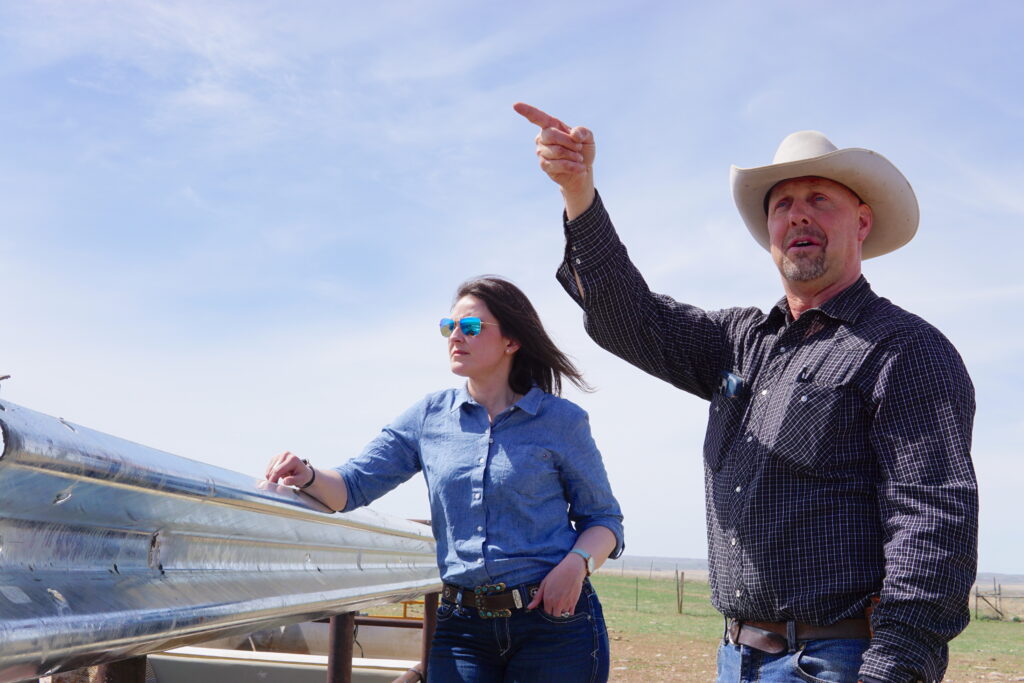
Desi Seal, the Big Game Habitat Improvement Project Coordinator for Pheasants Forever, said that although the RCPP is one of many tools the partners use to get conservation work on the ground, it symbolizes decades of coming to the table to find solutions.
“We’re all partners, be it the landowner or the NGO or agency providing technical or financial assistance, and we’re coming together to meet the needs of the landowner to continue to steward the land as well as conserve lands for wildlife,” she said. “We’re connecting ranchers to resources and building lifelong partnerships.”

For decades, Cody Oxarart’s family has worked with many of the RCPP partners, as well as NRCS, to find wildlife-friendly solutions to issues on their ranch, from wetland restoration projects to the fencing and intensive grazing projects they are implementing through the RCPP. He said that the innovation that can come from working with multiple partners through programs like the RCPP and the Rancher’s Stewardship Alliance makes his family’s operation more sustainable.
“I’m fourth generation on one side and fifth generation on the other,” Oxarart said. “I want to keep that legacy going. You gotta start doing things out of the box, so this is what we’re trying to implement. The more grass you can raise, the more critters you can raise.”
For the Oxararts, Roth, and the others who come to the table, the vision is clear: a Northern Great Plains where agriculture, big game, birds, and people thrive, despite the challenges. Despite drought; despite market pressures that threaten to gobble up native prairie in favor of lucrative-in-the-moment crops; and despite cultural divides that, at times, can seem too deep to cross—these partners show up.
“This is an opportunity for us to be working together and talking about both sides of the issues, coming to consensus, and getting something done,” Roth said. “This is doing it. I love it.”
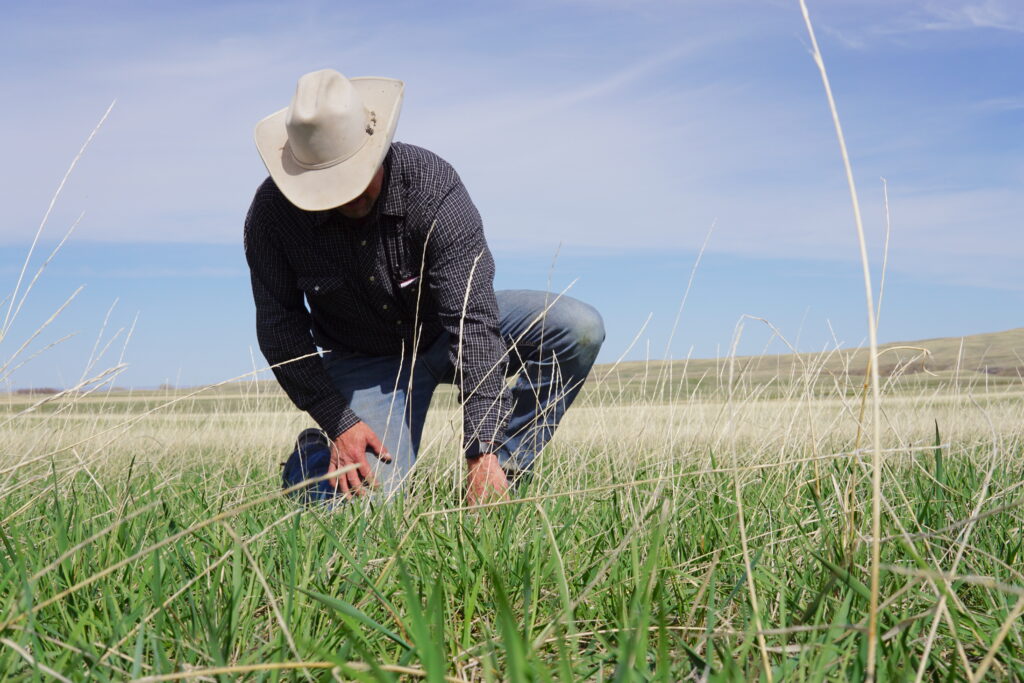
Rich Roth examines native grass growing in a pasture he reseeded through the Big Game Habitat Improvement RCPP. “It’ll get a really nice stand—it’ll reseed and it will be alright,” he said in approval.
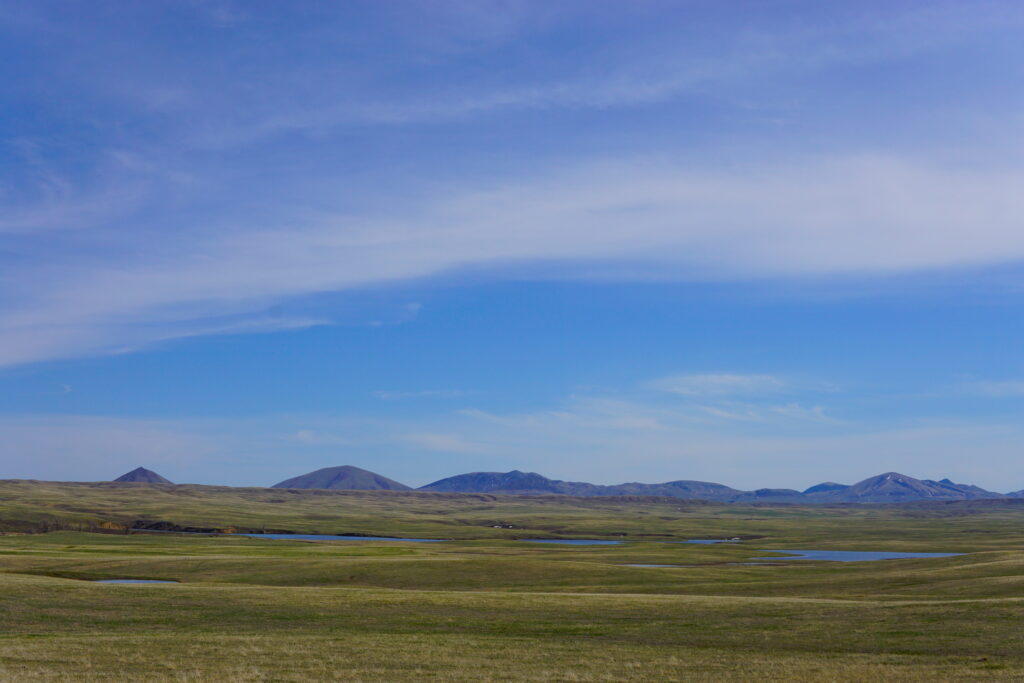
The Bear Paw Mountains are the backdrop for a landscape of grassland and potholes on the E Hanging T division of the IX Ranch in Blaine County, Montana. This area of north-central Montana is part of the “Prairie Potholes” region, where nesting and breeding migratory waterfowl rely on seasonal ponds and wet meadows scattered across the grasslands.
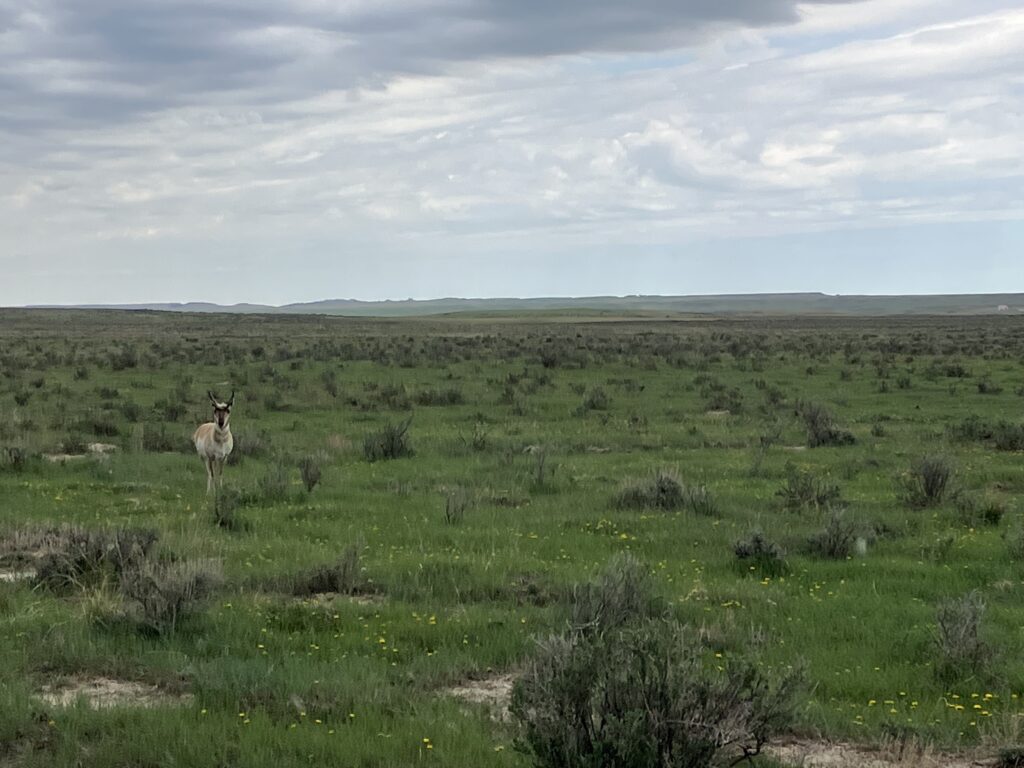
Although the Big Game Habitat Improvement RCPP focuses on private land practices aimed at making big game migratory corridors easier for mule deer, pronghorn, and elk to traverse, the benefits go far beyond those three species. Improved infrastructure like stockwater tanks and fences can make livestock management easier on ranchers, keeping cattle out of the riparian areas and potholes relied on by migratory birds and waterfowl. Native grass reseeding keeps invasive species at bay and encourages diverse and resilient plant communities. Plus, the RCPP creates resources for ranchers to try new grazing practices, giving them an opportunity to enhance their operations in ways that might otherwise be prohibitive in terms of cost, time, or knowledge.
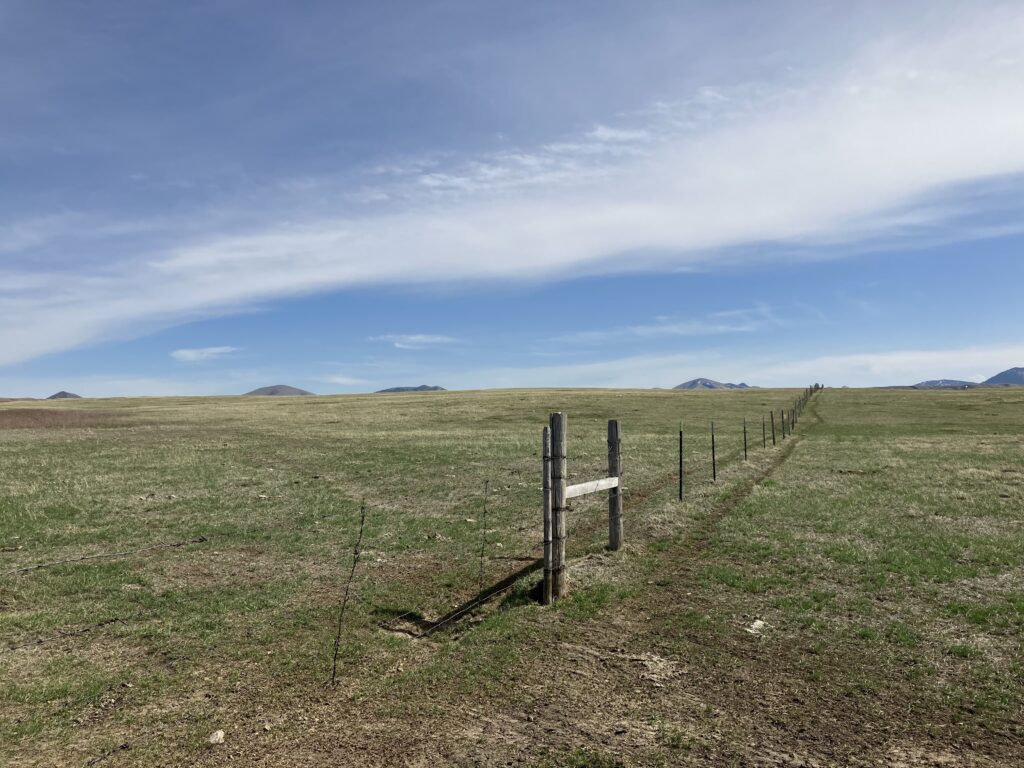
Volunteers with Pheasants Forever helped Roth install this wildlife-friendly fence on the E Hanging T division of the IX Ranch in 2022. RCPP requires partners to identify any combination of cash and in-kind value-added contributions (like labor) to leverage NRCS’s investments.
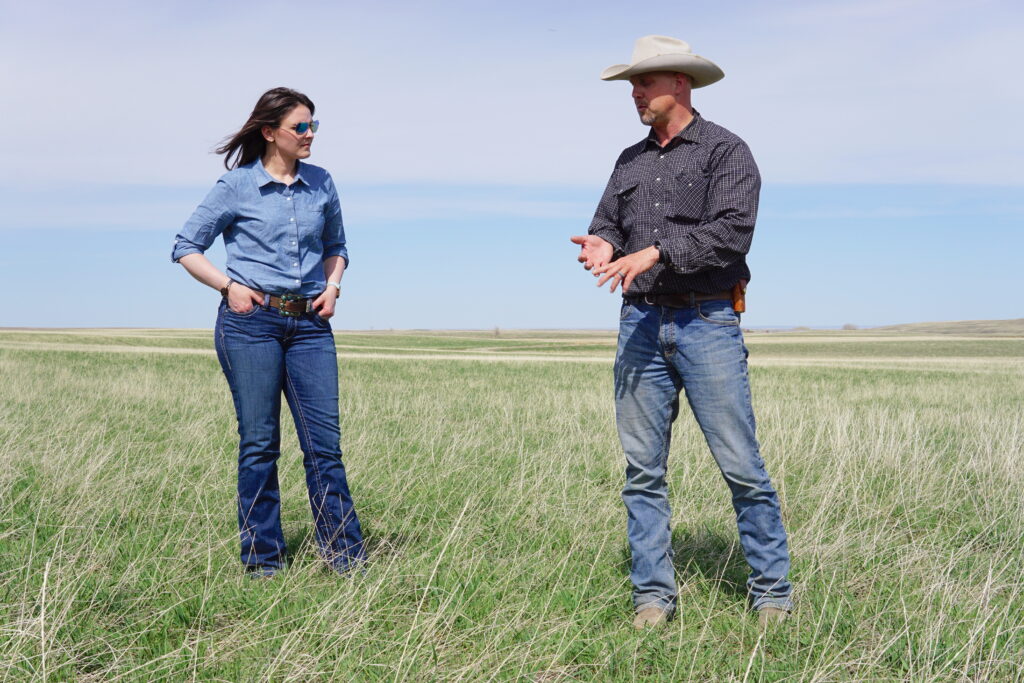
Desi Seal, the RCPP Coordinator for Pheasants Forever, listens to rancher Rich Roth about a successful native grass seeding on his property. Roth said that he seeks out conversations with people in the conservation community to better generate understanding about what landowners’ needs and goals are. “The only way for people to know about fence spacing, tank structure, grazing practices, is for guys like me that are doing it every day and have been doing it their whole life to be involved in these things and to come to the table,” he said.
The projects described in this story would not be possible without the assistance of many partnering organizations and entities, including the participating ranching families; the USFWS Partners for Fish and Wildlife Program and Sagebrush Ecosystem Team; Ranchers Stewardship Alliance ; Montana Fish, Wildlife and Parks ; Natural Resources Conservation Service ; Pheasants Forever ; Ducks Unlimited ; The Nature Conservancy ; World Wildlife Fund ; National Wildlife Federation ; Prairie Pothole Joint Venture ; and others.
